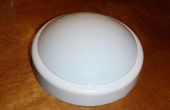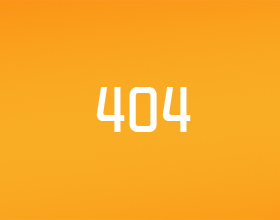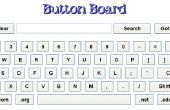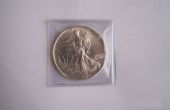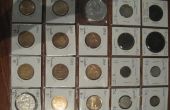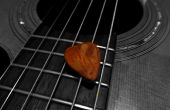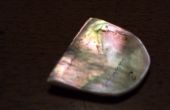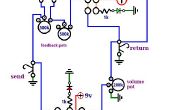Paso 2: El código
El código:
#include <EEPROMex.h> #define NUMSELECTIONS 4 // global variables unsigned int addressButton1StateBits; int currentSelection; boolean button1Pressed = 0; boolean previousButton1Pressed = 0; unsigned long debounceCount; unsigned long blinkMillis; unsigned int blinkInterval; void setup() { //Serial.begin(57600); // initialize EEPROM settings EEPROM.setMaxAllowedWrites(400); EEPROM.setMemPool(256, EEPROMSizeATmega328); addressButton1StateBits = EEPROM.getAddress(4); currentSelection = readEESelection(); // Serial.print("\nRestored Selection "); // Serial.println(currentSelection); pinMode(12, INPUT_PULLUP); pinMode(2, OUTPUT); pinMode(3, OUTPUT); pinMode(4, OUTPUT); pinMode(5, OUTPUT); pinMode(13, OUTPUT); digitalWrite(2, 1); digitalWrite(3, 1); digitalWrite(4, 1); digitalWrite(5, 1); digitalWrite(13, 1); // turn on the LED for the restored selection digitalWrite(currentSelection + 2, 0); } // end of setup void loop() { // read the button no more often than once every 20 ms, debouncing if (millis() > 20 && debounceCount < millis() - 20) { debounceCount = millis(); button1Pressed = !digitalRead(12); } // if the button has been pressed, increment and store selection if (previousButton1Pressed != button1Pressed) { previousButton1Pressed = button1Pressed; // only take action when button is pressed, not when released if (button1Pressed) { // turn off the LED for the old selection digitalWrite(currentSelection + 2, 1); currentSelection++; currentSelection %= NUMSELECTIONS; // turn on the LED for the new selection digitalWrite(currentSelection + 2, 0); // Serial.print("Current Selection "); // Serial.println(currentSelection); updateEESelection(); } } // Here in the loop is where we can do different things depending on // what selection was made with the button. // In this case we blink the Arduino on-board LED at different intervals // depending on the selection. // This also demonstrates main loop processing without delay blocking. if (currentSelection == 0) { // Dim the LED by blinking it rapidly, bit-banging PWM if (digitalRead(13)) { blinkInterval = 0; } else { blinkInterval = 10; } } else if (currentSelection == 1) { // Blink once per second blinkInterval = 500; } else if (currentSelection == 2) { // Blink every 2 seconds blinkInterval = 1000; } else if (currentSelection == 3) { // Quick flash every 1.5 seconds, this is also bit-banging PWM, very slow if (digitalRead(13)) { blinkInterval = 50; } else { blinkInterval = 1450; } } if (millis() > blinkInterval && blinkMillis < millis() - blinkInterval) { blinkMillis = millis(); digitalWrite(13, !digitalRead(13)); } } // end of loop byte readEESelection() { // count through the bits of storage until we find a bit set to 1 byte i; for (i = 0; i < 32; i++) { byte byteNum, bitNum; byteNum = i / 8; bitNum = i % 8; boolean bitValue = EEPROM.readBit(addressButton1StateBits + byteNum, bitNum); if (bitValue) { break; } } // return the modulus of the bit number, that is the selection number return i % NUMSELECTIONS; } void updateEESelection() { while (readEESelection() != currentSelection) { // count through the bits of storage until we find a bit set to 1 // and set that bit to 0 byte i, byteNum, bitNum; for (i = 0; i < 32; i++) { byteNum = i / 8; bitNum = i % 8; if (EEPROM.readBit(addressButton1StateBits + byteNum, bitNum) == 1) { EEPROM.updateBit(addressButton1StateBits + byteNum, bitNum, 0); break; } // if we don't find a bit set to 1, set all to 1 to start search over if (i == 31) { // a bit to clear was not found before the last bit for (i = 0; i < 4; i++) { EEPROM.updateByte(addressButton1StateBits + i, 0xFF); } } } } // while loop repeats until the bits are set so they match selection number }
